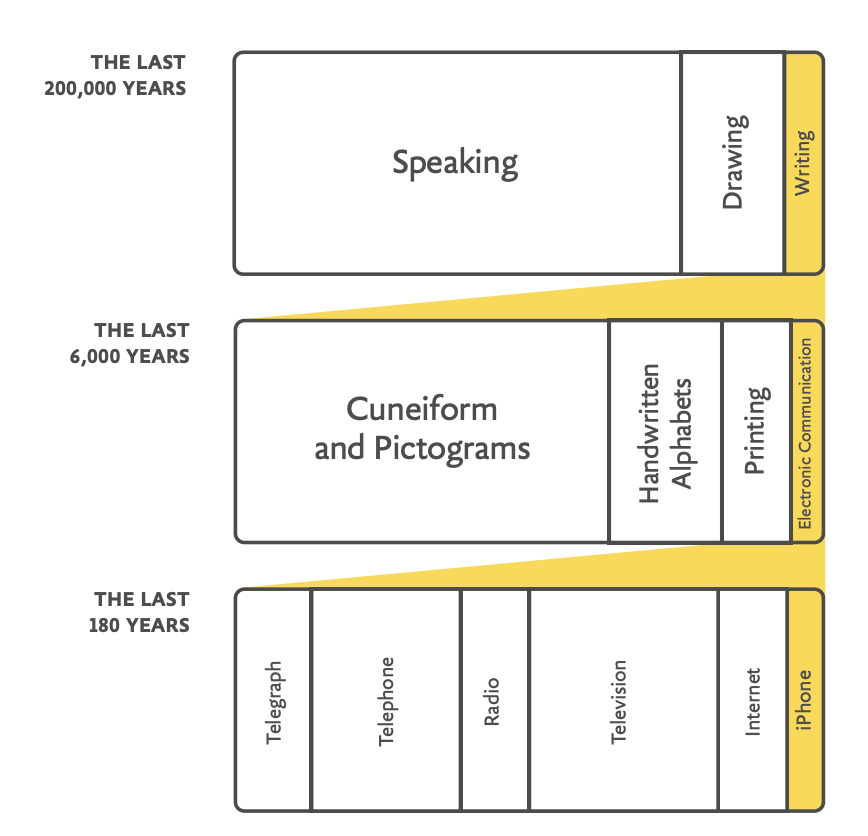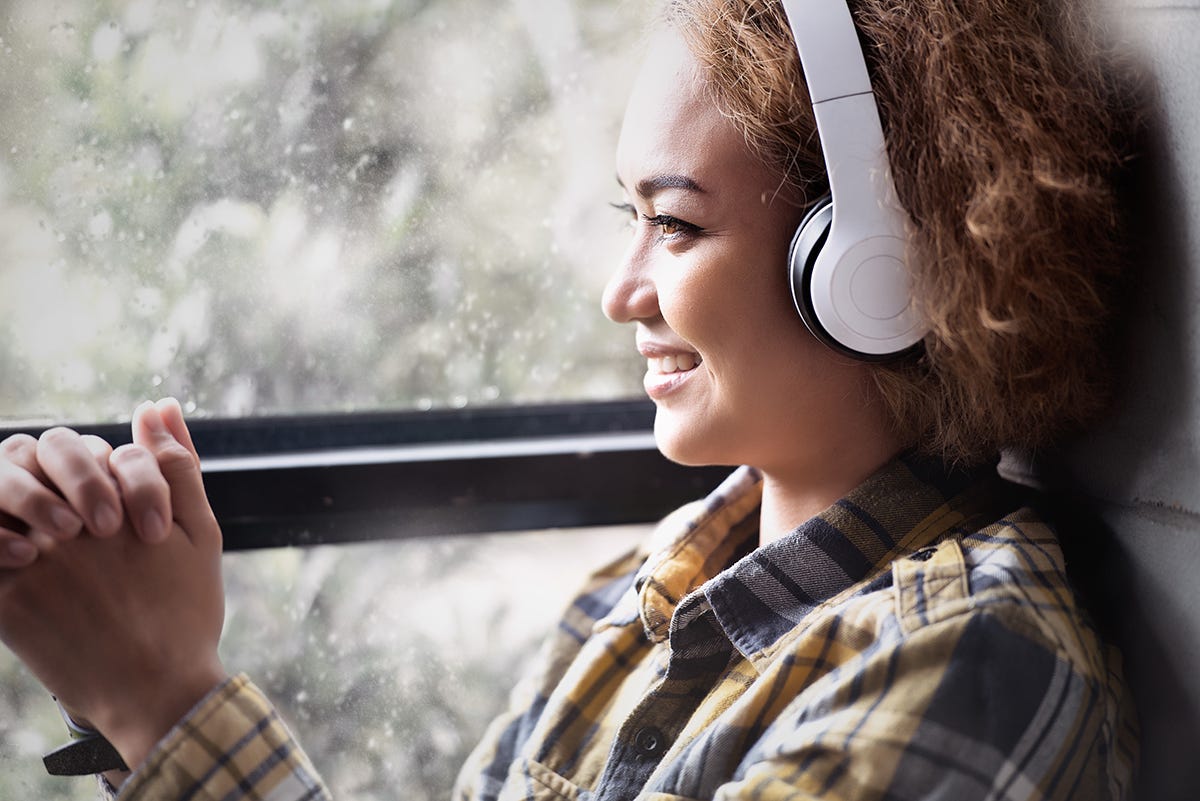It’s news to no one that in 2019, content consumption is at an all-time high. We’re living in an age of dawn to dusk connectivity where it’s extremely difficult not to be distracted by the next news story, viral meme, or cat video.
One thing that might be surprising, however, is that even with well-known channels like Netflix and YouTube constantly vying for our attention, audio is still a primary format for popular content consumption.
- 92% of Americans listen to the radio each week (Nielsen)
- Streaming audio has become a weekly habit for 60% of Americans, with the average American spending 16 hours and 43 minutes listening to online audio per week (Edison Research)
- Podcasting is also taking off, with American’s share of time listening to podcasts has grown 122% since 2014 (Share of Ear)
- Podcast revenues are forecasted to reach $659 million by 2020, a 110% hike from 2017 (IAB)
More and more listeners are grabbing their headphones and tuning in, but in a culture where most people can’t even get through dinner without checking their smartphone, can audio really be as captivating as these statistics imply?
In a World Always Looking to the Next Big Thing, Why Audio?
Instead of asking why audio, you might start by asking, “Why anything but audio?”
For the majority of human history, communication has primarily been carried out through the oral tradition. It’s only in the last 6,000 years that anything else has been in existence.
Human language is thought to have developed around 200,000 BCE, with no evidence of symbol usage present until around 30,000 BCE when the first examples of cave paintings appear. Fast forward through the Upper Paleolithic period, it isn’t until 3500–2900 BCE that we see the early signs of written communication emerge with the Sumerians’ invention of the cuneiform and later, the Egyptian’s development of hieroglyphs.
While the Phoenician alphabet came around 1050 BCE, it still took another 3,000 years to get us to email, smartphones, and the internet, with the majority of today’s tech innovations occurring in the last 200 years.

Graphic: Conversation Design by Erika Hall
Throughout all of these advances in delivery, the oral tradition persisted. In fact, no matter what “the next big thing” is, we always seem to revert to voice.
The invention of the printing press, film, and the electric telegraph were answered with the telephone, phonograph, and radio, indicating that the urge to connect, preserve, and share ideas through voice and sound is an innate human desire.
Today we are in the midst of another audio renaissance.
Though much of the last 70 years focused on 20th-century advances like television, video, computers, and the internet, all of these technologies, while aiming to bring people together, have instead helped create the detached, complicated, and hurried lives we live today.
The response? Looking for connection in a more intimate form. As such, people are yearning to return to audio and voice, a more natural, personal, frictionless medium.
A New Era of Audio
In an article from the Atlantic, Emma Rodero, a communications professor at the Pompeu Fabra University in Barcelona, is quoted as saying, “Audio is one of the most intimate forms of media because you are constantly building your own images of the story in your mind and you’re creating your own production…and that of course, is something that you can never get with visual media.”
This intimacy, personalization, and connection to content are the driving forces of this new era of audio.
Today’s listeners are from a generation where choice and on-demand experiences are the norm. They only seek audio they can genuinely relate to on a visceral level, and anything else is just noise.
Aside from listening experiences needing to be personally relatable, contemporary audiences are looking for media that can adapt to a life of constant transition. Audio content is innately portable and available across virtually all popular devices and platforms. This ease in mobile consumption makes audio the natural choice for people on the go.
Lastly, modern audio is built around a lifestyle of multi-tasking.
Unlike video or print, audio is not reliant on visual or tactile interaction with its delivery device. Audio is in your ear, and easily controlled through voice technology, making the listening experience as hands-off and screen independent as is dictated by a given situation. Whether navigating through heavy traffic, working out, or the more mundane task of brushing teeth, the ability to consume content while focus is elsewhere is an absolute must.

With Popularity Comes Growing Pains
As the demand for audio content has risen, the space has grown increasingly saturated. The influx of content and interest has created many challenges, but some of the main pain points center around Discoverability, Accessibility, and Monetization.
Discoverability
A recent blog post by Chartable notes that “in 2018, an average of 575 podcasts were started every day — that’s about one podcast every three minutes” and TechCrunch noted last June that “Apple Podcasts currently hosts north of 550,000 active shows.”
That is a lot of podcasts.
Given the sheer amount of content being put onto the metaphorical airwaves each day, it becomes near impossible for listeners to uncover new material that might be relevant to their interests as there are no tools to navigate the space.
On the opposite end of the spectrum, podcasters want to step in and get their content in front of the right audience, but being heard above the din of the crowd is extremely difficult.
Podcasts, however, are not the only format struggling.
Traditional AM/FM radio remains the most consumed form of audio, but it has a major Achilles Heel that is rarely discussed. In a world where every aspect of life is documented, shared, and forever preserved, terrestrial radio fades into the ether post-broadcast.
There is no easy way to easily revisit or share a favorite moment from a radio story — even if it was streamed.
While some radio broadcasts are archived online, it’s usually in large audio files, which may or may not include show notes or segment timestamps.
The magic of audio is nestled in those small snippets of content that you want to preserve and share, but when people don’t even have the time to listen to a podcast at normal speed, who has the time to dig through hours of content for 30 seconds of audio? Or worse yet, go through a database of hundreds of thousands of podcasts looking for something relevant?
Without a way to search through all of this audio contextually, there is no way to create the personal, intimate listening experiences that today’s audiences demand.
Accessibility
Cloud-based services have taught consumers to expect media to smoothly flow with them from one device to another, from one task to the next. Listeners need to be able to seamlessly move from the car to their office to making dinner, all without having to pause.
While great strides towards this goal have been made, for all audio aside from music, the results are a mixed bag.
Smart speakers still haven’t fully embraced podcasts, and when it comes to the news, they rely on flash briefings from a computerized voice.
Advances in artificial intelligence have made smart assistants more personable; though it still isn’t the same as hearing content in its original voice .
Native audio in cars allow for content direct from radio sources, but access to podcasts still requires a peripheral device. Smartphones, tablets, and computers do the best job of providing seamless listening experiences, but users still must rely on multiple applications to fully meet their listening needs.
Another barrier to users accessing audio is the modern-day problem of context-switching.

While you might not consider this an obvious barrier to the medium, the issue crystalizes when you consider how distracted and overwhelmed we are as a society. An infographic by Inc. notes that we spend an average of just 1 minute and 15 seconds on a task before being interrupted.
That is not a lot of time. To make it worse, Inc. also points out that it takes a whopping 25 minutes to resume a task once interrupted.
With the average radio show lasting 2–3 hours and podcasts usually coming in at 30–45 minutes, finding an audio format that will meet the distracted listener where they are is a huge challenge.
Monetization
It is often reported that podcasting is easy to get into because all you need is your voice and a recording device, and while technically true, the idea is misleading. Even if the host chooses to go with a minimalist equipment setup, podcasts also require substantial time commitments for not only recording, but for research, editing, and promotion.
The adage ‘time is money’ may be cliche, but for a reason. Many podcasters embrace sponsorship, reading out commercials about everything from mattresses to underwear in order to bring in revenue to sustain production, but if your show doesn’t have a large following, sponsorship deals can be sparse.
Companies and App Developers also struggle with audio monetization. The two populations see the benefit of adding audio to their products — increased engagement and retention. However, beyond avoiding churn, what else is in it for them?
Companies, Developers, Creators, and Listeners all feel the draw to audio, but still aren’t exactly sure how to get content when they want, how they want, and how to benefit from it once they have it.
What is needed to resolve these pain points is a native audio solution that will:
- Work in an omnichannel setting
- Be tailored to a multi-tasking world
- Present both deep and contextual audio content
- Personalize the listening experience
- Give companies actionable listening insights
- Shed light on the monetization possibilities of audio
It’s a tall order to fill, but there is a solution that is up to the task.
Connecting Listeners to the World’s Audio Content
Audioburst’s vision is to empower the proliferation of ideas, knowledge, and perspectives through universal access to the world’s audio content. The best way to do this in a hectic, fast-paced world is to make sure that you’re meeting users where they are…
…and the best way to do that is to be everywhere.
Audioburst works with the world’s leading companies in seamlessly integrating next-gen audio content solutions to increase user engagement, gain valuable insights from audio analytics and listening data, and create new revenue streams for brands and content creators.
We provide not only access to content, but also the tools that it takes to navigate that content, which in turn, eases the friction of interacting with audio for companies, developers, creators, and ultimately, listeners.
How it Works

Using Automatic Speech Recognition (ASR) and Natural Language Processing (NLP), Audioburst listens, distills, contextualizes, and indexes audio content from both podcasts and radio into bite-sized “bursts,” diffusing the noise, and creating the short-form building blocks required for deeply personalized, immersive listening experiences, ideal for the busy lives of today’s listeners.
We then partner with companies to seamlessly integrate our solutions into their products through the use of our easy to implement APIs.
This opens the door to data-driven audio content experiences, including personalized playlists based on listening identities, real-time audio alerts for user-specified terms, and access to a robust audio search engine that provides results not based solely on keywords, but also intent, context, and timing.
Our solutions form a complete audio ecosystem that removes the difficulties of navigating a densely populated audio landscape:
Discoverability
Radio broadcasts that previously went uncaptured and podcasts that got lost in the shuffle are now easily accessible with the help of a powerful AI-driven audio search engine that draws on context and listener identities to provide a customized experience.
Accessibility
With Audioburst technology baked into a diverse array of products and applications, the on-the-go user can easily move between multiple devices, our personalized listening experience providing short form, digestible content that transitions with them without skipping a beat.

Audioburst Wizard
Distribution & Monetization
Partnerships with leading brands such as Bose, Samsung, and LG allow content creators to benefit from increased distribution and visibility, while both partners and creators gain access to new monetization opportunities via rev-share.
Data & Analysis
Partners and Developers benefit from access to essential listening data and audio content analytics that can unlock what drives customers — their interests, behaviors, and values.
Audio is here to stay
It’s an exciting time for both Audioburst, and for audio itself as a vehicle for information, engagement, and entertainment.
Our focus remains on bridging the gap between knowledge and access, listening for new ways that we can ease any bumps in the road that get in the way of audio’s continued success.
While some might worry that audio is yesterday’s news, we take comfort in knowing that it will be tomorrow’s as well.




